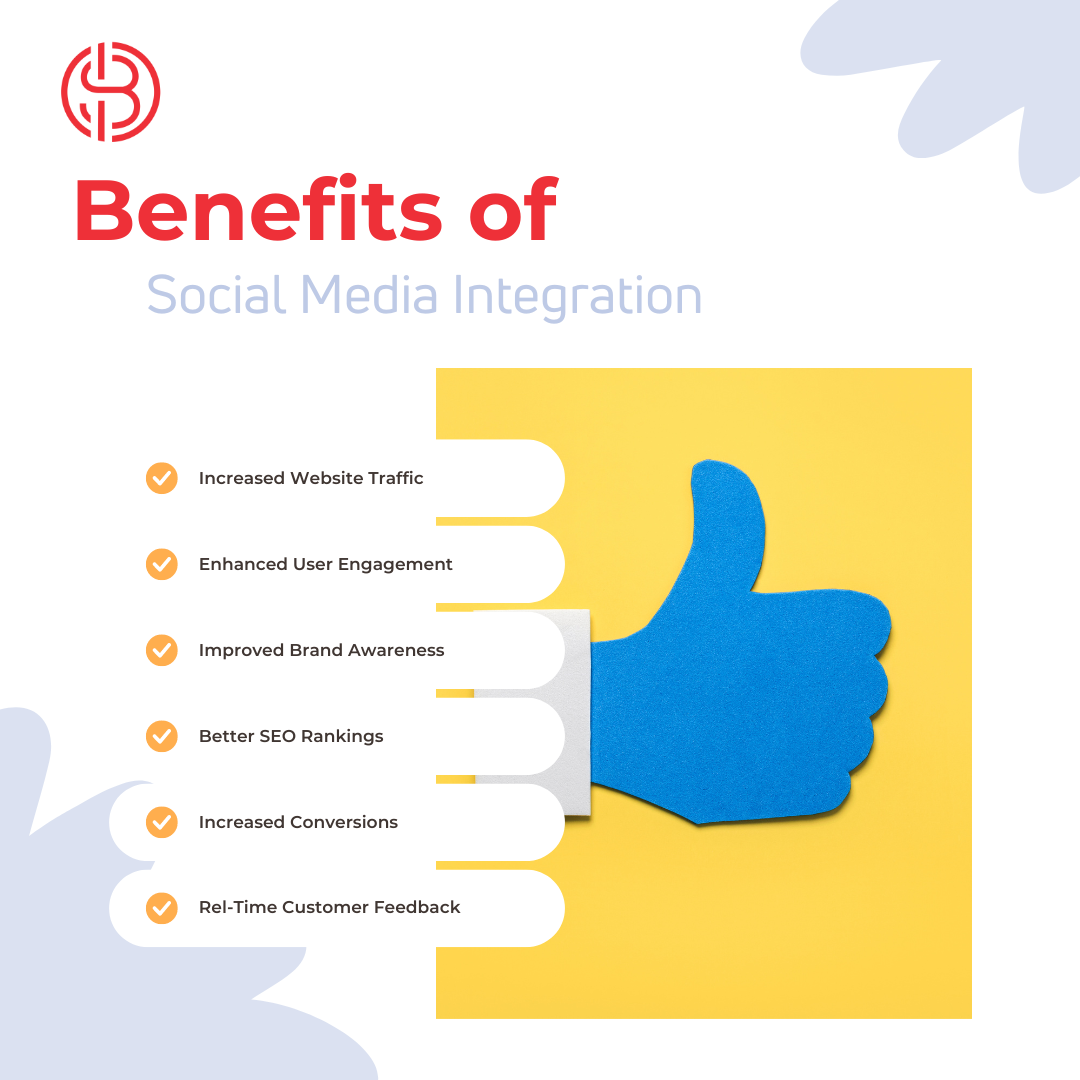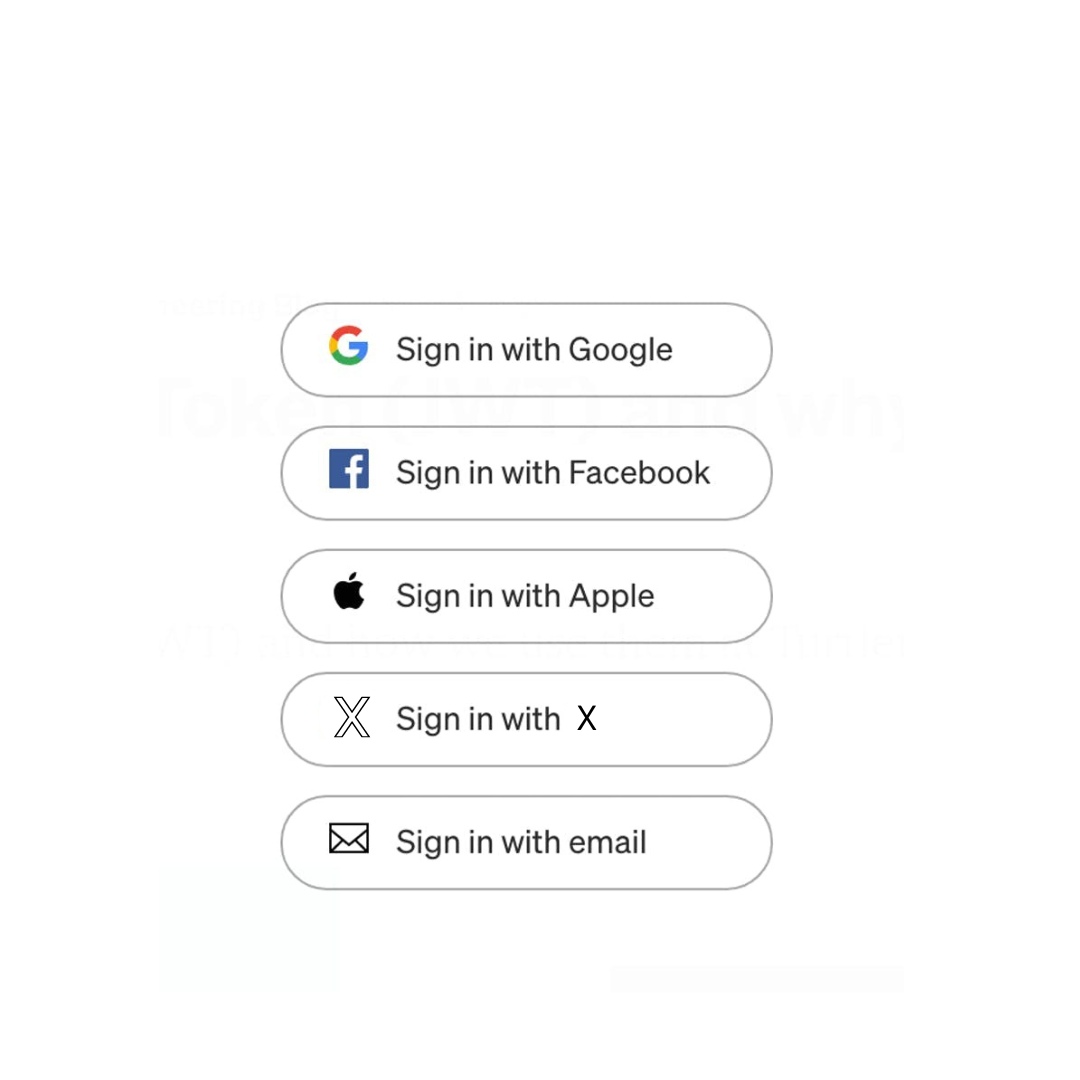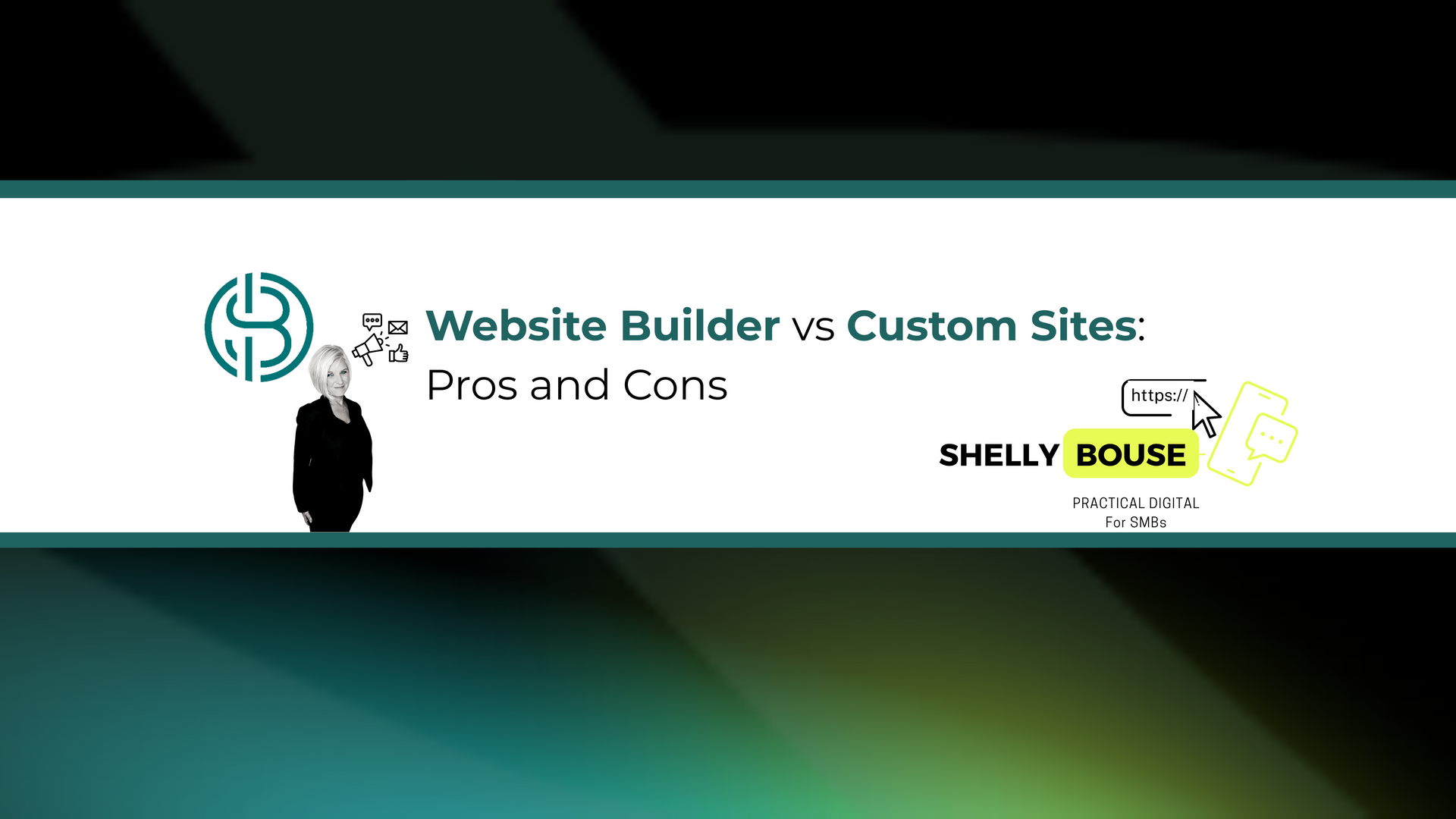Website and Social Media Integration Made Easy
Shelly Bouse • April 14, 2025
Easy Steps for Website and Social Media Integration


Key Highlights
- Enhance your online presence by seamlessly integrating your website and social media channels.
- Drive traffic, boost engagement, and improve SEO rankings through strategic integration techniques.
- Explore step-by-step methods for adding social media buttons, embedding feeds, and utilizing social login.
- Discover advanced strategies like leveraging hashtags and creating shareable content.
- Learn how to measure the success of your efforts using analytics and avoid common integration pitfalls.
Understanding Website and Social Media Integration
Website and social media integration means connecting your social media accounts with your website. This helps to create a strong online presence. You can use platforms like Facebook, X, Instagram , and LinkedIn to bring more visitors to your website. It can also boost your brand awareness and improve your marketing efforts.
By adding your social media profiles to your website, you make it easy for visitors to find and interact with your content. This encourages them to engage with your brand on different platforms.
Cross-promotion helps to create a consistent brand experience , expands your reach, and builds a community around your brand.
The Definition of Social Media Integration
Social media integration is about connecting your social media content and platforms with your website. This helps create a strong and linked online presence. It means more than just adding social media icons to your site. It involves adding social features to your website so visitors can connect, interact, and share easily.
This integration includes different methods. For example, you can embed social media feeds on your website or allow users to log in using their social media accounts. By using these features, you invite visitors to engage with your brand in various ways.
When done well, a social media integration strategy can turn your website from a simple place for information into a lively and engaging platform. This helps you reach your target audience better and build lasting connections. It can lead to meaningful results for your brand.
Key Reasons Why Integration is Essential
In today's connected world, social media integration is a must for any business that wants to succeed online. This integration links your website to social media channels. This is a good way to reach more people and improve your marketing efforts.
By using social media, you show potential customers that your brand is trustworthy.
Sharing positive reviews, testimonials, and social media activity helps build credibility. When website visitors see this, they are more likely to view your brand positively.
Integration also helps create a community and encourages interaction. When customers engage with your brand on different platforms, it builds strong relationships. This leads to increased brand loyalty and more sales.


The Benefits of Integrating Social Media on Your Website
Integrating social media into your website brings many benefits. It helps improve your online presence and can boost your business. When you connect these two important parts, you create a lively and interesting experience for your audience. This can lead to more visitors, higher engagement, and better conversions.
You can make logins easier with social login options. You can also display lively social media feeds on your site. This kind of integration offers great ways to improve how your website works and makes the visit more enjoyable for users.
Boosting Your Site's Traffic Through Social Channels
One big benefit of combining your website with social media is that it can greatly increase the traffic to your site . Social media has billions of users, which gives you many potential visitors.
When you add social sharing buttons to your website, you make it easy for your audience to share valuable content with their friends and family. This helps your content reach more people, going beyond just your social media followers and drawing in a wider audience to your website.
By encouraging customer engagement on social media and linking back to your site, you can create a steady flow of visitors. Interesting social media posts, fun stories, and live sessions can spark interest, making users want to visit your website for more details about your brand and what you offer.
Enhancing User Engagement and Retention
Social media integration helps drive traffic and greatly improves user experience and retention on your website. When you add features like share buttons, social media icons, and social media feeds into your website's design, it makes using the site more enjoyable.
Good integration helps visitors move easily between your website and social media. This makes it fun for them to interact and feel like part of a community, rather than just viewers.
Also, when you put social media feeds on your website, you give real-time updates. This shows new content and keeps your audience interested with little effort. That steady flow of fresh content can bring visitors back often and keep them on your site longer.
Improving SEO Rankings with Social Signals
While social signals might not be a direct ranking factor for search engines, they contribute significantly to building a robust online presence that search engines value. Active social media profiles with high engagement rates signal to search engines that your content is valuable and share-worthy, enhancing your website's credibility and authority.
When your content receives ample social shares, likes, and comments, it indicates to search engines that your website offers valuable and engaging content relevant to your target audience.
This positive reinforcement can lead to higher rankings in search engine result pages (SERPs), making it easier for potential customers to discover your website organically.
Step-by-Step Guide to Integrate Social Media into Your Website
Integrating social media into your website can be easy. You can follow these steps to combine your social presence with your website. This will create a strong brand experience. It will attract your audience and help you get better results. You can add social media buttons in good places and use social login options. Each step will make your website more engaging and easy to use.
Adding Social Media Buttons to Your Site
Adding social media buttons is an easy and effective way to connect social media to your website. These buttons are clickable icons for different social platforms that link to your brand's profiles. You should place these buttons in good spots, like the header, footer, or inside blog posts. This way, visitors can easily connect with you.
Social share buttons are also a great idea. They help people share your content easily.
When you add these buttons next to your blog posts and articles, readers can share your content with just one click.
Social media buttons remind visitors about your social profiles. They make it simple for people to follow, like, or share what you post. This small change can really help increase your reach and bring more traffic back to your website.
Embedding Social Media Feeds and Posts
To make your website more engaging, think about adding social media feeds and posts.
By showing live updates from platforms like X, Instagram, or Facebook, you provide visitors with real-time content. This way, they can see how your brand interacts on social media.
Adding social media feeds not only makes your site look nicer but also gives new and interesting content. This can help keep visitors on your site longer. You could show your latest blog post, share good customer reviews, or display content created by your users related to your brand.
When you embed social media posts, focus on visual platforms like Instagram. This is where appealing pictures and videos can grab the attention of your website visitors.
Always make sure that the content you choose matches your brand and fits well with the look of your website. This brings a clear and attractive experience to everyone who visits.
Utilizing Social Login for User Convenience
In today's fast-moving digital world, making the user experience simple is very important.
Social login gives users an easy and safe way to get into your website. They do not have to make a new account or remember another password.
When you use social login, your users can log in without trouble. They can use their existing social media accounts like Facebook, Google, or X. This easy method cuts out long sign-up forms and helps to make checkout faster, which can lead to more sales.
Also, social login helps you get useful user data for your marketing efforts. When users share their social media profiles, they allow you to access their name, email address, and interests.

Advanced Strategies for Social Media Integration
Using basic integration techniques is a good start. However, looking into advanced strategies can greatly improve your social media integration. These advanced strategies will not just increase your social media presence, but also make your website more effective and engaging.
By using these strategies, you can build a better online experience for your audience. This approach helps create stronger connections and brings valuable results for your business.
Implementing Social Media Widgets for Real-Time Updates
Social media widgets are great tools. They let you get updates on your website in real-time. This means visitors can see new content without you having to update it by hand.
These widgets are like windows into your social media profiles. They show your latest posts, tweets, or pins in a nice way.
Real-time updates make your website interesting. They encourage people to come back and check for new content. Whether you are sharing news about product launches, industry facts, or customer reviews, social media widgets help keep your audience informed with little effort.
When you use social media widgets, pay attention to where you place them and how they look. Put them in clear spots on your website, like the sidebar or the footer. This way, they are easy to see, but they won’t take attention away from your main content.
Leveraging Hashtags for Cross-Promotion
Hashtags are a vital part of social media. They help users find content on specific topics. You can use hashtags in your website content and social media posts to promote your brand and reach more people.
When you write for your website, look for relevant hashtags in your area. Use them naturally in your blog posts, articles, and product descriptions. This will help your content show up in searches for those hashtags on sites like X, Instagram, and LinkedIn.
Being consistent is really important when using hashtags for cross-promotion. You should also encourage people to share their content. Create a unique brand hashtag and share it on all your platforms.
Creating Shareable Content with Social Media in Mind
An effective social media integration strategy is more than just linking your platforms. It is about making content that your target audience will want to share. By knowing how different social media platforms work, you can customize your content to connect with people. This will help you use the power of social media to expand your reach, start conversations, and bring more visitors to your website.
When you create content, think about adding nice visuals like clear images, fun videos, and interactive polls. These types of posts usually do very well on social media. Also, use catchy headlines that grab attention and make users want to visit your website for more information.
Keep in mind that social media works best when your content is shareable. If you make content that is useful, fun, or interesting, your audience is more likely to share it with others. This can help spread your brand further than just your followers and bring more valuable traffic back to your website.
Measuring the Success of Your Integration Efforts
Measuring how well your website works with your social media is very important. This helps you see if you are meeting your goals. By looking at key numbers and data, you can learn what is working well. You can also spot areas that need improvement. This way, you can improve your strategy for better results.
You should check website visits that come from social media. Also, look at how people engage with your social media content. Using data helps you make smart choices. It can improve your integration efforts and lead to more success.
Tools and Metrics for Tracking Engagement
To measure how well your integration efforts are working, track key metrics that show how your audience engages with your content. Use social media analytics tools from platforms like Google Analytics , Meta Business Suite , and X Analytics to gather useful insights about your performance.
Look closely at metrics like website traffic from social media referrals. This shows how well you are driving traffic from social platforms to your website. If the referral traffic goes up, it means your integration is working to bring users to your site.
Check the engagement rate on your social media platforms. This includes likes, shares, comments, and click-through rates. These metrics will help you see how well your content connects with your audience. When you know what your audience likes, you can change your content strategy to create more valuable interactions.
Analyzing Traffic Source Data from Social Media
When looking at traffic data, pay attention to which social media channels bring the most visitors to your website. Knowing your best channels helps you use your resources wisely. This way, you can invest more time and energy on the platforms that give you the best results.
Also, take a closer look at how visitors act when they come from different social media channels. Check their bounce rates, how long they stay on your site, and how many pages they view. This can show you which channels attract the most interested audience.
By studying traffic sources and user behavior, you can learn a lot about what your audience likes. This helps you improve your marketing strategies and create content that drives better engagement and conversions.
Avoiding Common Pitfalls in Social Media Integration
Adding social media to your website has many benefits. However, you need to watch out for some problems that may hurt your success. A common mistake is failing to keep a consistent brand experience on all platforms. Make sure your brand message, visuals, and tone are the same everywhere. This helps avoid confusing your audience.
You should regularly ask for customer feedback. This will help you see how well your efforts connect with your target audience. Listen to comments, messages, and reviews. This way, you can find ways to improve.
Overcoming Technical Challenges
Technical problems can come up when adding social media to your website. This could mess up your social media integration strategy. To avoid these issues, start by choosing the right tools and plugins that match your website platform and needs.
Before you fully set up any integration, test everything well. This will help make sure all parts work correctly and fit nicely with your website's look and functions. Keep your social media plugins and widgets updated. Doing this helps you get the newest features, security fixes, and performance boosts.
It's important to focus on user experience first. Check how your social media integration affects website speed, navigation , and how easy it is for people to use.
Ensuring Consistency Across Platforms
Maintaining a clear and steady brand experience on all platforms is important for building a strong brand identity and earning trust from your audience. First, start by checking your current social media profiles. Look closely at your brand messaging, visuals, and how often you post.
Make sure that your brand logo, colors, fonts, and images are the same on all your social profiles and your website. This visual consistency helps people recognize your brand. It also makes them feel comfortable, no matter where they see your brand.
You should regularly check and update your brand guidelines. This will help you keep up with any changes in your messaging or visuals. By staying consistent, you give a smooth brand experience that your audience can connect with.
In conclusion, adding social media to your website is very important. It helps drive traffic, engage users, and improve your SEO rankings. You can make your website better by adding social media buttons, embedding feeds, and using widgets. This will create a good user experience and increase your online visibility. Make sure to track your success using tools and metrics. Also, avoid common issues like technical problems and branding inconsistencies. If you want a smooth integration process that meets your business needs, contact us today. Let's improve your website by using the power of social media.
Frequently Asked Questions
What are the first steps to integrate social media on my website?
A great way to increase your online presence is by adding social media buttons to your website. This can help improve user experience. It will also attract new customers!
How can I track the impact of social media integration?
Social media analytics tools give you helpful information about your marketing campaign and marketing efforts. They help you see how well you are engaging with your audience.
You can check your engagement rate and understand how your strategies are working.
Can integrating social media improve my site's SEO?
Using social media may not directly affect your ranking. However, it can boost your online presence and brand awareness. This can lead to more traffic to your website. When you add positive social signals, it may help improve your SEO rankings.












